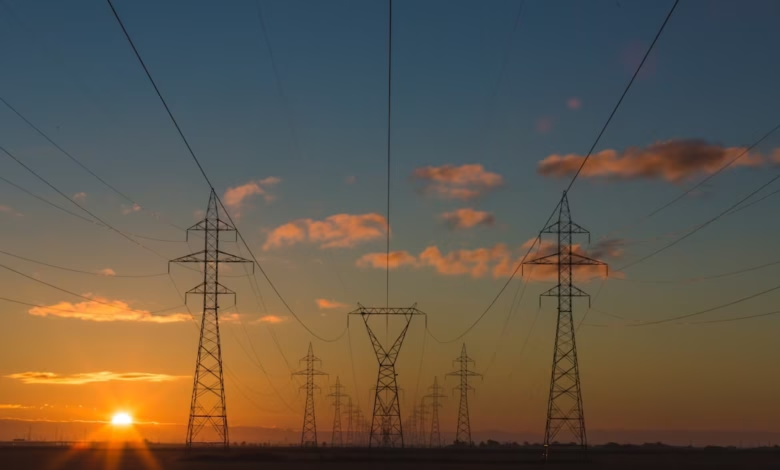Navigating the Future of Energy: Fossil Fuels, Renewable Solutions, and Innovations for a Sustainable Energy Transition

Fossil fuels have long been the backbone of global energy production, shaping economies and driving advancements in technology. As we navigate the complexities of the 21st century, understanding the role of oil, coal, and natural gas in our energy landscape is more crucial than ever. With an increasing focus on climate change and the urgent need to transition toward greener solutions, the dynamics of fossil fuel production and consumption are evolving rapidly. This article delves into the current global energy trends, exploring how fossil fuels coexist with renewable energy sources, such as wind and solar power, as well as nuclear energy solutions. We will also discuss the innovations in energy efficiency and carbon capture technologies that are paving the way for a sustainable future in energy markets. By examining these critical aspects, we aim to provide insights into the ongoing energy transition and its implications for energy policy, security, and investment. Join us as we navigate the intricate landscape of fossil fuels and their impact on the future of energy.
- 1. The Role of Fossil Fuels in Global Energy Trends: Understanding Oil, Coal, and Natural Gas Production and Consumption
- 2. Navigating the Energy Transition: Balancing Fossil Fuels with Renewable Energy and Nuclear Energy Solutions
- 3. Innovations in Energy Efficiency and Carbon Capture: Paving the Way for a Sustainable Future in Energy Markets
1. The Role of Fossil Fuels in Global Energy Trends: Understanding Oil, Coal, and Natural Gas Production and Consumption
Fossil fuels—namely oil, coal, and natural gas—have historically played a critical role in global energy trends, shaping not only energy consumption patterns but also influencing economic development and energy policy across nations. Despite the growing emphasis on renewable energy sources, fossil fuels continue to dominate the energy landscape, accounting for approximately 80% of the world's total energy consumption as of 2023 (International Energy Agency, 2023).
Oil remains the cornerstone of the global energy market, primarily driven by its use in transportation and industrial applications. As electric vehicles gain popularity, oil consumption is experiencing a gradual shift; however, the transition is not without challenges. Natural gas, often considered a cleaner-burning fossil fuel, is increasingly viewed as a bridge fuel in the energy transition, supporting the integration of renewable energy sources like wind and solar power into the energy mix. This is particularly important for energy storage solutions, which are essential to manage the intermittent nature of renewable energy.
Coal, while historically the backbone of thermal energy production, is facing significant declines in consumption due to environmental concerns and the rise of green energy alternatives. Countries are investing in energy efficiency measures and carbon capture technologies to mitigate the negative impacts of coal usage. The global push for energy innovation has led to advancements in energy markets that prioritize renewable energy investments, increasing energy security and reducing dependence on fossil fuel imports.
The energy transition is further accelerated by the development of smart grids and distributed energy systems, which enhance energy efficiency and facilitate the integration of diverse energy sources, including hydropower and bioenergy. As nations strive to meet climate change goals, energy policies are increasingly focusing on transitioning to a low-carbon economy, emphasizing the necessity of balancing fossil fuel usage with investments in renewable energy infrastructure.
Energy exports and imports are also evolving, as countries seek to optimize their energy economics in response to fluctuating fossil fuel prices and emerging energy technologies. This dynamic landscape is fostering global energy trends that not only enhance energy transportation but also stimulate energy R&D aimed at developing sustainable energy solutions, including hydrogen energy.
In conclusion, while the role of fossil fuels continues to be significant in the global energy framework, the ongoing energy transition towards renewables is reshaping how oil, coal, and natural gas are produced and consumed. Understanding these intricacies is vital for stakeholders in energy markets as they navigate the complexities of energy policies, investments, and innovations that will define the future of energy security and sustainability.
References
International Energy Agency. (2023). World Energy Outlook 2023. Retrieved from [link]
(Note: Replace "[link]" with the actual URL of the source.)
2. Navigating the Energy Transition: Balancing Fossil Fuels with Renewable Energy and Nuclear Energy Solutions
As the world grapples with the urgent need to address climate change, navigating the energy transition is paramount. This transition involves balancing the continued use of fossil fuels—such as oil, coal, and natural gas—with an aggressive push toward renewable energy and nuclear energy solutions. The challenge lies in ensuring energy security while simultaneously reducing carbon emissions and fostering sustainable energy markets.
Fossil fuels have long been the backbone of global energy consumption, providing thermal energy and powering various sectors, from transportation to industry. However, as awareness of climate change increases, there is a significant shift towards green energy sources, including solar power, wind energy, hydropower, and bioenergy. The integration of these renewable energy sources requires advancements in energy storage technologies to manage supply and demand effectively. Energy efficiency measures are also critical in maximizing the utility of existing resources while minimizing waste.
Nuclear energy presents another essential component of the energy transition. It delivers a stable and low-carbon energy supply, capable of complementing intermittent renewable sources. With ongoing innovations in nuclear technology, such as small modular reactors, nuclear energy can play a vital role in achieving energy security and reducing reliance on fossil fuels. Furthermore, advancements in carbon capture technology can help mitigate the environmental impact of fossil fuel consumption, allowing for a more gradual transition.
Energy policy will be crucial in shaping the future of energy investments. Governments must create conducive environments for renewable energy projects and nuclear energy development while managing the decline of fossil fuels. This includes promoting energy R&D and facilitating the deployment of smart grids that enhance energy transportation and distribution efficiency.
Global energy trends indicate that the demand for clean energy technologies will only increase, necessitating a collaborative approach among nations. Countries must balance energy exports and imports, leveraging their unique resources while investing in distributed energy solutions that empower local communities.
In conclusion, navigating the energy transition requires a multifaceted strategy that prioritizes the integration of fossil fuels with renewable sources and nuclear energy. By focusing on energy security, efficiency, and innovations, we can create a sustainable energy future that addresses climate challenges and meets the growing global demand for energy.
3. Innovations in Energy Efficiency and Carbon Capture: Paving the Way for a Sustainable Future in Energy Markets
As the world grapples with the pressing challenges posed by climate change, innovations in energy efficiency and carbon capture are becoming critical components of a sustainable future in energy markets. The transition from fossil fuels to renewable energy sources requires significant advancements in technology and policy to improve energy efficiency while reducing greenhouse gas emissions.
Energy efficiency is vital in optimizing the use of existing energy resources. By enhancing the performance of buildings, industrial processes, and transportation systems, we can significantly reduce our reliance on fossil fuels. For instance, adopting smart grids allows for better management of electricity consumption, integrating renewable energy sources like solar power and wind energy. These systems enable real-time data monitoring, ensuring that energy is used more efficiently and reducing waste.
Carbon capture technology is another promising innovation that can play a pivotal role in mitigating the environmental impact of fossil fuels. By capturing carbon dioxide emissions from sources such as coal and natural gas power plants, we can prevent large amounts of CO2 from entering the atmosphere. This technology not only helps in meeting energy policy goals but also supports the energy transition towards a low-carbon economy. The development of carbon capture and storage (CCS) facilities is becoming increasingly important in energy investment strategies, as they align with global energy trends focused on sustainability.
Moreover, the integration of energy storage solutions, including thermal energy and hydrogen energy, is essential for managing the intermittent nature of renewable energy sources. Innovations in battery technology and other energy storage systems enhance energy security by ensuring a reliable power supply, even when renewable generation is low. This is particularly crucial as electric vehicles gain traction, necessitating a robust infrastructure for charging and energy distribution.
Distributed energy resources, such as hydropower and bioenergy, are also gaining attention as part of the energy transition. These decentralized systems can reduce energy imports and bolster energy exports, creating a more resilient energy economy. The focus on energy R&D is vital for advancing these technologies and improving energy economics, allowing for a more sustainable and secure energy future.
In conclusion, the innovations in energy efficiency and carbon capture not only pave the way for a sustainable future but also address the urgent need for climate action. By investing in these technologies, we can transition away from fossil fuels and foster a greener energy landscape that aligns with global efforts to combat climate change.
In conclusion, the discussion surrounding fossil fuels—comprising oil, coal, and natural gas—reveals a complex interplay within global energy trends. As the world grapples with the urgent need for energy security and the pressing challenge of climate change, the energy transition towards renewable energy sources becomes paramount. While fossil fuels have historically dominated energy markets, innovations in energy efficiency, carbon capture technologies, and the integration of nuclear energy solutions present viable pathways towards a greener future.
As we navigate this transition, it is crucial to balance traditional energy sources with emerging alternatives such as solar power, wind energy, and hydropower, alongside the development of distributed energy systems and smart grids. The focus on energy storage and hydrogen energy will play a significant role in enhancing energy economics and facilitating the shift to electric vehicles and other sustainable technologies.
Ultimately, effective energy policy and strategic energy investments will be essential in shaping a sustainable energy landscape that accommodates both fossil fuels and green energy solutions. As we look ahead, the commitment to energy R&D and innovative practices will pave the way for a resilient energy future, ensuring that we can meet growing energy demands while safeguarding our planet for generations to come.





